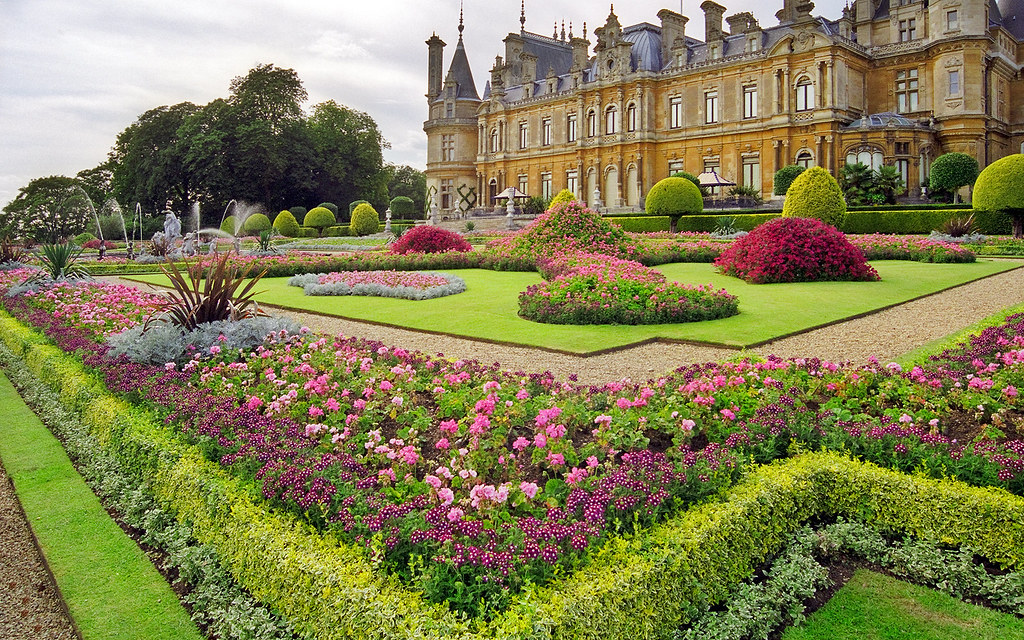| Chatsworth |
| Biddulph Grange |
Victorian gardens could be both formal and informal depending on what was in the garden and how it was created. They do however look like they have been put there by man. They have plants from all over the world. The plant hunters and exotic plants were the inspirations for these gardens as the plants were formal and artistic. This was the most important part of the Victorian gardens. Depending on wealth of the owner, the gardens would be mixed and matched with different kinds of plants. The more variety the better. They used these plants for display on conservatory, household decorations, industrialization, increased distribution of wealth, urbanization and suburbanization. The Victorian villas were desired as they were big houses and big grounds. Suburban living was popular so having these villas on the outskirts of town was a big deal.
 |
| Example of plants in Waddesdon Manor Gardens, UK |
Victorian gardens were enclosed by cast iron fencing. This was very popular during this time to show the ornate design. Besides plants, the Victorian gardens had many ornaments such as arboretums to show trees, brightly colored flower beds that were loud and brash, parterres, glass houses, and rockeries. The gardens also had urns, statues and sculptures, bird baths, and seating.
| Example of a glasshouse in London, Crystal Palace |
Victorian society and gardens really changed gardening today as gardening became very popular and different plants were introduced. I have included some links below with more information and if you want to start gardening yourself there are some links on how to try a Victorian garden for yourself :)
Sources:
http://www.doityourself.com/stry/victoriangarden#b
http://www.nationaltrust.org.uk/article-1356400599248/
http://www.victoriana.com/gardening/
Photos:
http://uktripper.com/images/b/biddulph-elevation.jpg
http://upload.wikimedia.org/wikipedia/commons/1/16/Chatsworth_House.jpg
http://upload.wikimedia.org/wikipedia/commons/d/d8/Crystal_Palace_General_view_from_Water_Temple.jpg
https://c1.staticflickr.com/9/8515/8475895600_29da7fa3c5_b.jpg
